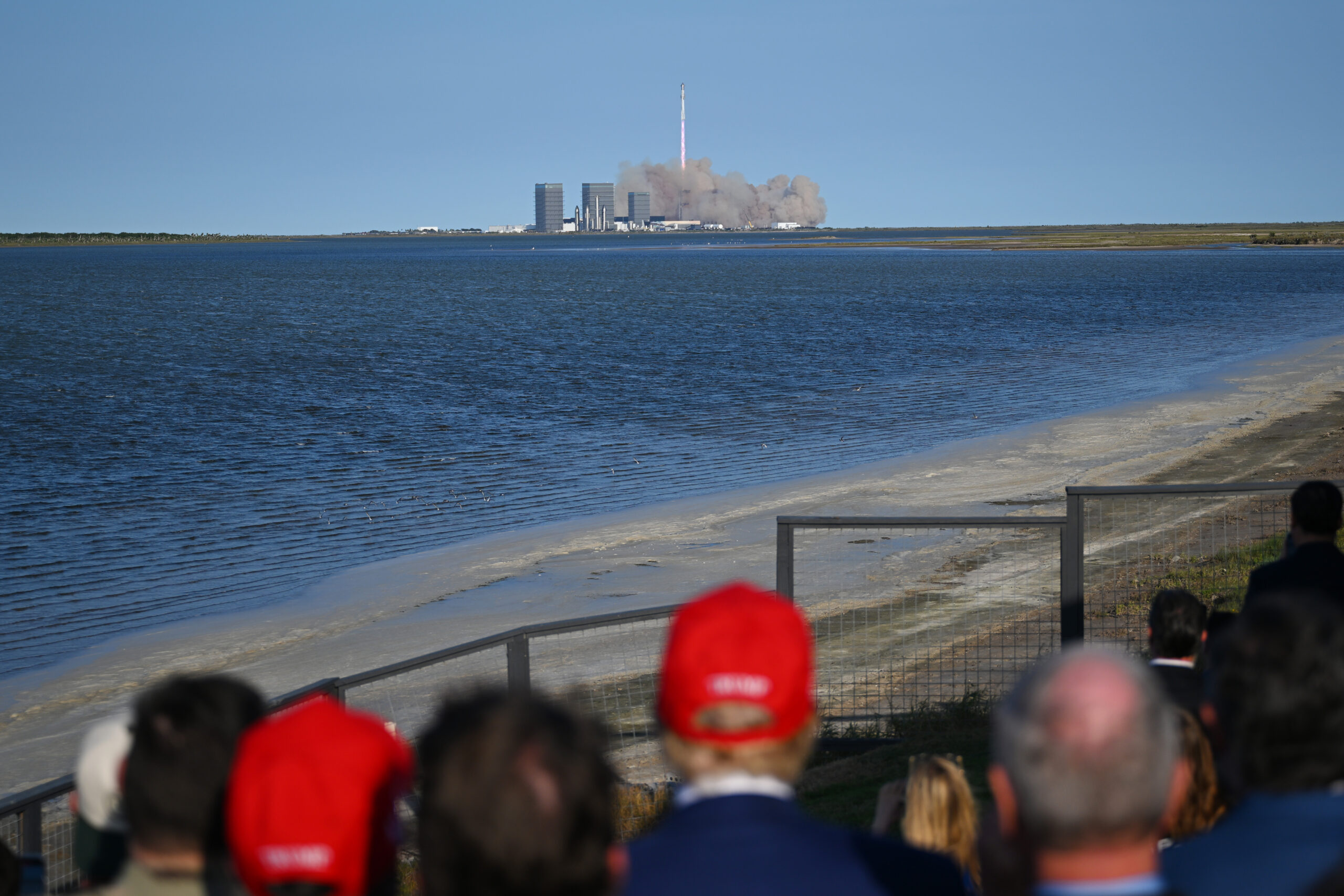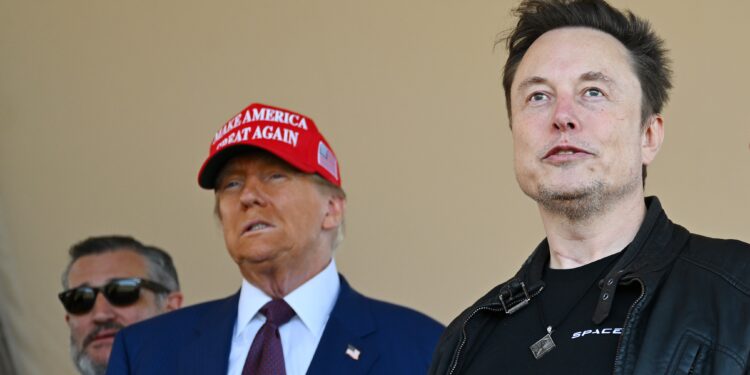Donald Trump traveled to Texas to observe a launch tower intended for capturing a rocket booster, akin to how a parent delicately holds their infant, but instead witnessed the spectacle of 33 rocket engines plummeting into the ocean.
On Tuesday, the president-elect was accompanied by Elon Musk, his campaign donor turned advisor on government efficiency, to view SpaceX’s latest test flight of the Starship vehicle system.
The NASA contractor aimed to replicate a stunning feat where massive mechanical arms on the launch tower “catch” a rocket booster mid-flight as it descends back to Earth.
The rocket booster’s engines provide the necessary thrust to propel the vehicle into space, detaching from the spacecraft once the engines cease operation.
Following SpaceX’s impressive catch for the first time in October, Trump lauded Musk as a “super-genius,” marveling that the arms seized the rocket “just like you cradle your little one at night.”

However, merely four minutes into Tuesday’s launch, the mission director aborted the catch and instructed the booster to descend into the Gulf of Mexico, as reported by the Financial Times. SpaceX has yet to clarify the reasoning behind this decision.
Approximately 35 minutes later, Trump did receive a small consolation when engineers reignited an engine in space for the very first time. Nonetheless, this was hardly comparable to witnessing a trail of fire streaking backward toward a launch tower, only to be caught by massive moving metal arms.
Standing nearly 400 feet tall, Starship is the most powerful rocket ever constructed, boasting an estimated cost of $100 million per launch, according to the Financial Times. The reusability of boosters has been crucial in SpaceX’s mission to halve the costs associated with each Starship flight.
With a keen interest in space exploration, Trump attended the launch alongside several Republican lawmakers and was surprisingly muted afterward, sharing just a blurry image on his social media platform Truth Social that captured the back of his head as the rocket ascended.
Meanwhile, NASA Administrator Bill Nelson was more exuberant.
“Kudos to SpaceX on Starship’s sixth test flight,” he expressed in a post on X. “Thrilled to see the Raptor engine ignite in space—significant progress towards orbital flight.”
He remarked that Starship’s achievements reflect NASA’s achievements as well.
“Together, we will bring humanity back to the Moon and set our sights on Mars,” he stated.


